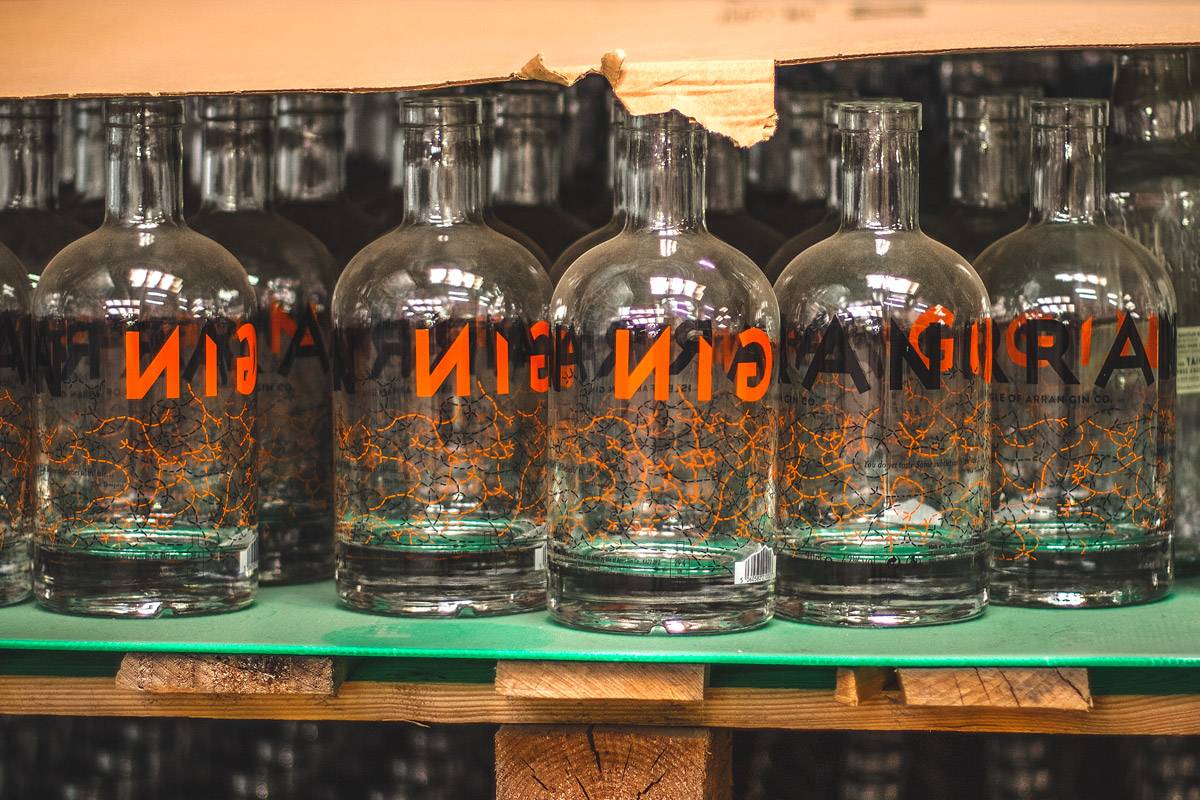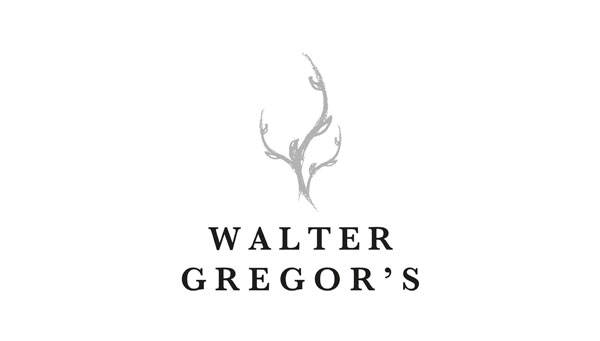



Our new editorial series ‘Spirit of Craft’ takes a look at the diverse range of skilled artisan makers working across the Scottish spirits industry. Through our exclusive editorial features, we want to highlight the fantastic people and Scottish businesses operating in the gin and spirits world that don’t make gin or spirits, but have the same passion and dedication to their craft as the gin and spirit makers. We’ve seen first hand how these highly-skilled makers, designers and producers play a vital role in supporting and contributing to the spirits industry and all play a part in helping further Scotland’s reputation for quality and craft.
Image on Glass
As gin drinkers we’ve all had that moment where we see a gin on the shelf and think ‘oh that looks lovely, I must try that’ based on how the bottle looks. What you probably didn’t know is that a small business based in Crieff, Scotland has played a vital role in this process since 1997.
Image on Glass have been working with some of the world’s best known Scottish Spirits, which has seen the business go from producing an initial order for 5,000 hand decorated bottles to currently producing over 1.5 million hand decorated bottles per year.
With a client list that spans a number of well known spirits brands including gin and whisky to small, artisan spirits brands that are new to the market, Image on Glass continue to play a unique role in the world of spirits production and are considered by many to be the best in the business here in the UK.
This reputation has been built and maintained by John Henderson, Managing Director, and his team, based on providing a first class service to all his customers. Through a variety of innovative solutions, Image on Glass has seen their order book grow year on year whilst always remaining focused on the customer.


From the very start to the finish of each project, John and his team play a hands on role to ensure the best outcome is achieved, “From the very first phone call to seeing the finished bottles on pallets and being shipped out all over the world, we’re there. We understand that we’re only as good as our last job. That might have been an order for 20,000 bottles for a premium gin or it might have been 200 bottles for a single cask release whisky. Every project is treated with the same care and attention. We currently work with over 25 gin brands and a number of premium whisky brands who see us as an important partner in the process of getting their spirit to market. Packaging and the bottle is often just as important as a liquid inside – if the packaging is poor or it doesn’t look like an appealing bottle then more than likely the customer will chose another bottle.
With our years of experience, we have developed a wealth of knowledge about the processes required to achieve the very best hand decorated glass finishes. We have a responsibility to all our customers. This includes advising them on which processes will work best for getting their design onto their bottle. It’s important to us that when those bottles appear on the shop shelves, they not only reflect their contents as being high quality spirits, but they reflect the quality of design and decoration expected by our clients”.
Image on Glass work with a variety of materials. Their process is also used on ceramic bottles and glassware including branded gin glasses and champagne flutes. Each type of material is different and every material reacts differently to the heat process used to apply the designs.


John explained, “We work closely with design and marketing departments to ensure that when we get the final designs from the client, they’re compatible with the heat process. The more colours involved, the more complex the job can be. We’re never scared of a challenge and with a staff of 18, we know a thing or two about what works and what doesn’t work. It’s this insight and industry knowledge that has helped us over the years produce some very complex and highly detailed bottles, including the original bottle for Caorunn. We produced a number of samples for the client before the final design was chosen and approved. It was a massive project for us as a small business but one we really enjoyed.
That being said, we’ve seen a wave of new craft spirit producers over the last five years, with many of these producing gin. We understand as a business that few, if any, of these small batch gin makers require a vast number of bottles straight away. That’s why we introduced a service that allows us to provide savings to small craft spirit producers but also have stock of their bottles at hand for when they need to produce their next batch. This service has been well received by the many smaller craft spirit producers we work with and has helped them continue their batch production uninterrupted as they know they have bottles sitting and ready to go”.
Once the client has approved a design for their bottle and packaging and selected their bottle shape and type, the hard work begins. There are a number of standard bottle shapes and types and John and his team know how they will react when exposed to the high temperatures required for applying the designs on glass, but from time to time a new bottle will appear on the market.


“Whenever we get a client with a new bottle shape, we inspect the bottle carefully for any imperfections in the glass that may cause issues. Often we can tell right away upon inspection if a bottle will be suitable for the kiln. This is why we work closely with a number of international bottle manufacturers and suppliers so we can try and foresee any potential issues with a specific bottle and can advise our clients on what will work.”
Image on Glass have a pretty stringent quality process in place to minimise any issues and ensure each of the bottles in a batch match. Firstly, each bottle is inspected by hand for any imperfections before being given the OK to be decorated. Next, the graphics for the bottle are carefully and accurately applied by hand. The graphics take the form of a water slide transfer, immersed in water and then applied directly onto the bottle. The bottles are then left to dry before being checked again for any imperfections. Next the bottles are moved over to the kiln stage.
The kiln operator arranges the bottles, normally in lines of up to 20 bottles before they spend the next 4 hours travelling along a 2 metre wide conveyer belt and through the 25 metre long kiln that sees the bottles exposed to temperatures up to almost 600 degrees Centigrade. Some parts of the transfer use a material that burns off when exposed to heat, leaving behind the actual design on the bottle. The heat helps the bottle absorb the transfer onto the bottle creating a super strong bond. Once the bottles appear at the other end of the kiln, the operator taps each row of bottles to check for any cracks or defects before they are cool enough to the touch to be moved safely onto an allocated pallet before being wrapped and shipped out.


With the kiln taking up to 12 hours to reach the right temperature, John and his team are often in on a Sunday evening preparing the kiln for the week ahead. As a result of the ever increasing cost for electricity for the kiln alone, efficiency and planning are key to ensuring the kiln operates at maximum efficiency during the week.
As the spirits industry has evolved, so has the technology aspect of producing bottles and packaging. With new processes coming to market, including direct print on glass, there are a number of more cost-effective production methods that John and his team are exploring so they can maintain their reputation as being the leading supplier of glass decoration in the UK. With a packed order book and new clients coming to Image on Glass for help with their packaging, John is optimistic about the future of the Scottish Spirits industry.
“We’ve seen a number of new Scottish Gins, Whiskies and Spirits come to market over the last few years, with many of them approaching us to help with their bottle needs. It’s a positive sign of how popular and in demand Scottish Spirits are across the globe. We’re also looking at some new printing technologies and how we can incorporate these into our workflow. It’s an exciting time for everyone involved in the Scottish Spirits industry with large and small craft spirit distilleries opening up right across Scotland. The future looks very positive”.
What John and his team have can’t be bottled. It’s taken years of hard work, skills learned on the job through trial and error, innovation, experience gained by studying glass manufacturing and understanding how a material as delicate as glass can be used in a variety of unique ways to capture the consumer’s eye.
So remember the next time you’re in the supermarket or your local bottle shop looking for your next gin purchase, chances are that bottle has, at some stage, been through the safe hands at Image on Glass.
You can learn about Image on Glass here.


 Creative Design Services
Creative Design Services
 Packaging
Packaging
 Corks, Capsules & Closures
Corks, Capsules & Closures
 Scottish Tonic Water
Scottish Tonic Water
 Scottish Gin Merchants
Scottish Gin Merchants
 Founder
Founder